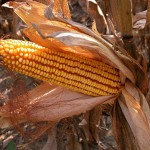
Based on comments made to me by growers in Tennessee, the enforcement of non-Bt corn refuge requirements appeared to increase in 2010. The update below is the better part of an article written by David Bennett of the Delta Farm Press. This may be a hint of things to come. The entire article can be found at http://deltafarmpress.com/corn/bt-corn-refuge-requirements-tightened (March 1, 2011). Last fall, in an attempt to tighten up Bt corn refuge requirements and oversight, the EPA imposed new refuge regulations. According to the National Corn Growers Association (NCGA), those requirements are:
- On-farm refuge compliance assessments will be conducted by an independent third-party and will be focused on: areas of highest risk of insect pest resistance development; and, growers who did not buy sufficient refuge seed from the Bt corn registrant.
- Growers out of compliance with the refuge requirements now have a higher probability of losing access to Bt corn if compliance is not established and maintained. Such compliance will be checked more frequently by the Bt corn registrants.
- Seed bag tags will better depict refuge size requirements.
Delta Farm Press recently spoke with Chad Blindauer, a South Dakota farmer and chairman of NCGA’s Trade Policy and Biotechnology Action Team about the Bt requirements. Among his comments:
On how the EPA’s call for an “independent third party” to monitor Bt-corn farms will work…
“Actually, that isn’t a new thing. Some companies were already using a third party to do their assessments. Now, though, it’s mandated that all companies use a third party” and don’t have the option of doing the assessment internally.
“And they aren’t all using the same third party – actually, some companies hire several third parties. There are different companies that contract to do this work. Some of it is regional – a certain company might cover only a certain area.”
“Areas of highest risk of insect pests, resistant development” – has that also been in place before?
“That’s something new. Before, there would be random assessments.
“We all know there are parts of the country with higher corn borer or rootworm pressure. It hasn’t developed yet, but if resistance was to develop it stands to reason it would in those areas with very high insect pressure. It only makes sense to target assessments in those areas.
“There are still other assessments – they aren’t all done in high-pressure insect areas.”
What about the second part of that: growers who don’t buy sufficient seed. How is that tracked? Any changes?
“There is no information sharing, but the companies know what a customer bought from them.
“What commonly happens is a customer will buy corn seed from numerous companies. Company A might have a better refuge corn but Company B might have better stacked corn. That happens regularly but all Company B knows is the customer didn’t buy any refuge corn from them.
“If a customer is assessed, they can say ‘Well, I bought my refuge corn from Company A.’ Then, the question is answered, the problem solved. That’s what is being checked.”
On the “higher probability of losing access to Bt corn if compliance is not established and maintained”…
“If the customer can’t show he bought refuge corn, then he cannot buy from that company any more. He needs to prove he bought refuge corn.
“If he didn’t, he’ll lose access to the technology.”
What about seed bag tags and what farmers should be looking for on those? How have those changed?
“Before, each company had their own symbols and their own way of showing requirements. Now, it’s more of a standardized tag that they’ll all be using.
“It should be much easier for the customer to understand what refuge requirements there are for a particular variety.”
One thing that can help farmers set up Bt corn fields and refuges properly is a on-line calculator available at http://ncga.com/irm-calculator.

